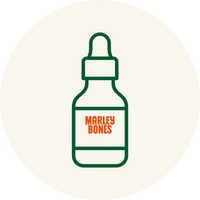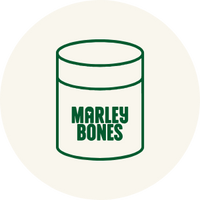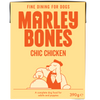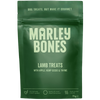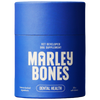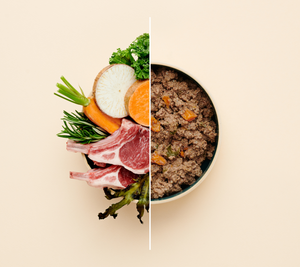Puppy Food vs. Adult Dog Food: Key Nutritional Differences Explained
When it comes to feeding your furry friend, choosing the right diet is crucial for their growth, development, and long-term health. If you've ever browsed the pet food aisle, you've likely noticed a clear distinction between puppy food and adult dog food. This isn’t just clever marketing—puppies and adult dogs have significantly different nutritional needs. Puppy food is specifically formulated to support rapid growth, development, and high energy levels with increased protein, essential fatty acids, and higher caloric density.
While adult dog food provides the essential nutrients required for maintenance, puppy food includes extra ingredients that cater to developmental stages. The duration for which a dog should remain on puppy food depends on breed size and growth rate. Smaller breeds typically mature faster, while larger breeds take longer. Consulting your veterinarian ensures the transition to adult food happens at the right time.
Davide Stefanutti, DVM, PhD, explains: “While the nutritional requirements of puppy and adult dog food are different, they are not mutually exclusive. This means that a food can be carefully formulated to contain all the essential nutrients in the right amounts to cover both puppies and adult dogs. This can be beneficial: for example, adult dog food does not need to contain omega-3 EPA and DHA to be labelled as complete and balanced, since these fatty acids are considered only conditionally essential, and not properly essential, for adult dogs. In puppies, instead, they are considered essential. So if a dog food is labelled as suitable for both puppies and adults, you know that your adult dog will benefit from the presence of omega-3 in the diet.”
Is Puppy Food Really Any Different Than Adult Dog Food?
Yes—puppy food and adult dog food have different nutritional profiles designed to support specific life stages.
Key Nutrient Differences:
- Protein: Puppy food has a higher overall protein content, though it may have slightly lower levels of specific amino acids like methionine compared to adult food.
- Fat: Puppy food contains more fat to meet their higher energy demands and must include arachidonic acid and omega-3 fatty acids ALA, EPA, and DHA, unlike adult food.
- Micronutrients: Puppy formulas contain increased levels of minerals like calcium and phosphorus to support bone development, as well as higher vitamin E.
- Caloric Density: Puppy food is more energy-dense to match their metabolic needs. As they mature, switching to adult food—or adjusting the portion size if feeding a dual-stage food like Marleybones—prevents excess weight gain.

What To Look For On Puppy Food Labels
When choosing puppy food, make sure it meets essential developmental requirements:
- Calcium to Phosphorus Ratio: Should fall between 1:1 and 1.6:1 to ensure proper bone development. Adult dogs can tolerate ratios up to 2:1.
- Essential Fatty Acids: Look for ALA (from linseeds), and EPA and DHA (from microalgae or seafood), which are crucial for brain and eye development.
Your puppy’s early nutrition lays the foundation for lifelong health. Ensuring you choose food that meets breed-specific growth needs is vital.
How Long Should Puppies Be On Puppy Food?
Puppies should stay on puppy food until they reach physical maturity:
- Small to Medium Breeds: Typically mature by 12 months.
- Large to Giant Breeds: May require up to 18–24 months to fully mature.
Suggested timeline:
- Weaning to 6 Months: Feed exclusively on puppy food tailored for rapid growth.
- 6 to 12 Months: Continue on puppy food with adjustments based on size and growth.
- 12+ Months (Small-Medium) or 24+ Months (Large-Giant): Transition to adult dog food over 7–10 days, or adjust the portion if using a dual-life-stage meal.
Always consider your puppy’s body condition and growth trajectory. Regular veterinary checkups can help determine the right timing for diet transitions.
Important nutrients to support development:
- High Protein Content: Promotes healthy muscle growth.
- Calcium and Phosphorus: Ensure strong bone development.
- DHA: Boosts cognitive and vision development.
Do Puppies Need Special Treats?
Absolutely. Puppies grow rapidly, and their nutritional needs extend to treats as well. Treats should not just be tasty rewards—they should support health and development.
What to consider when choosing puppy treats:
- Ingredients: Prioritise high protein, healthy fats, and added nutrients like calcium and DHA.
- Size and Texture: Opt for soft, small, and easy-to-chew treats that won’t pose a choking risk.
- Purpose: Training treats should be tiny and easy to eat quickly to avoid interrupting sessions.
Limit treat consumption to no more than 10% of daily calorie intake to prevent overfeeding and nutritional imbalances.
Marleybones treats are specially formulated to complement a balanced puppy diet, supporting brain development, bone growth, and energy levels.
Introduce treats gradually and monitor your puppy’s reaction. Treats should enhance—not replace—a complete and balanced nutritional plan.
Choosing the right food and treats at each stage of your dog’s life ensures they grow strong, stay healthy, and enjoy every meal along the way.

The Final Woof
Understanding the differences between puppy and adult dog food is essential for supporting your dog’s health throughout each life stage. Puppy food is specifically formulated to meet the elevated nutritional demands of growth and development, while adult food is designed to maintain health and prevent excess weight gain.
With input from veterinary professionals like Dr. Davide Stefanutti, we know that some high-quality dog foods—like Marleybones—are carefully balanced to suit both puppies and adults, making transitions simpler and feeding more convenient. Regardless of the diet you choose, always consult your vet to ensure it aligns with your dog’s specific nutritional needs, and remember: proper nutrition in the early stages lays the foundation for a lifetime of health.



